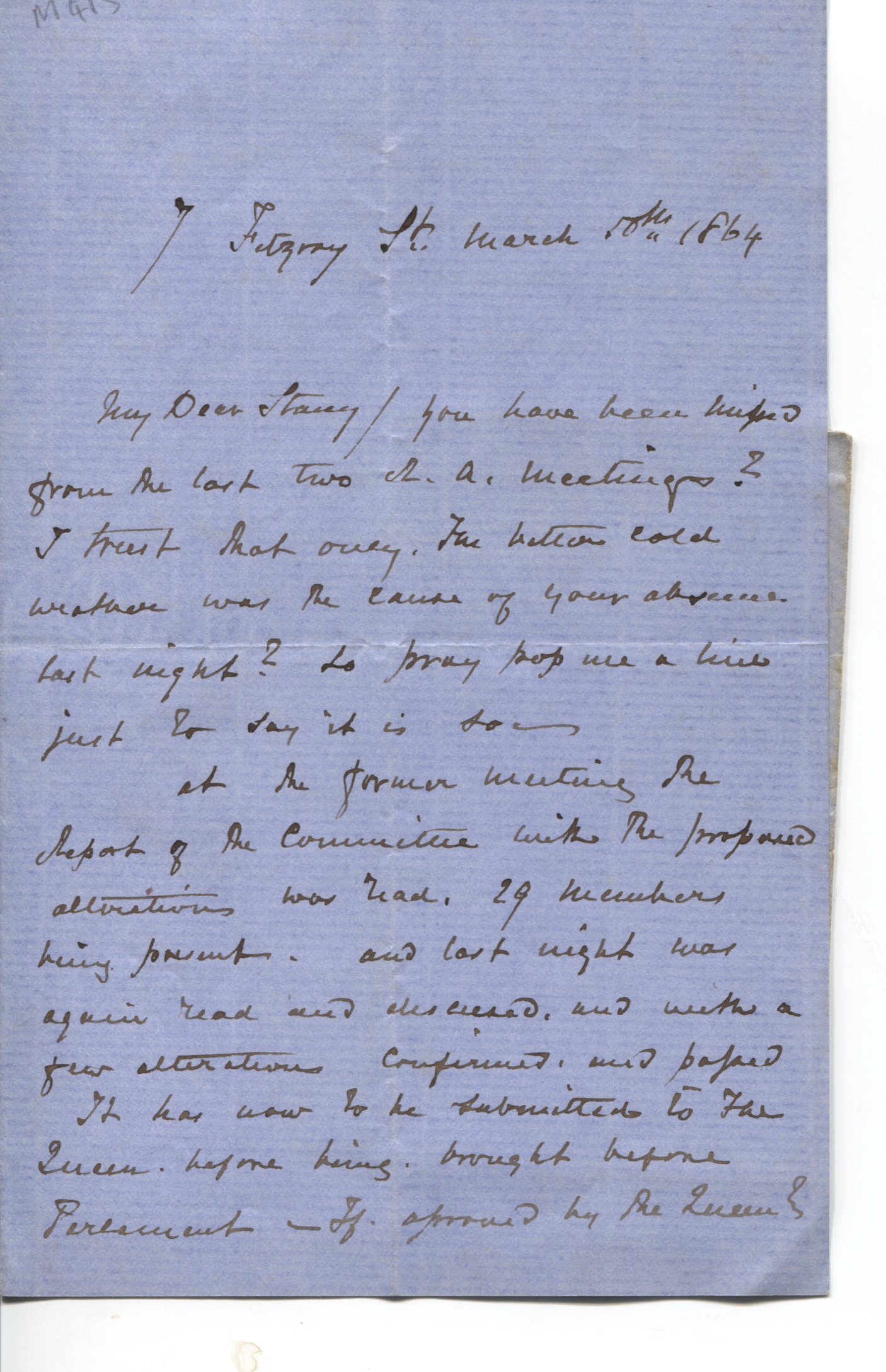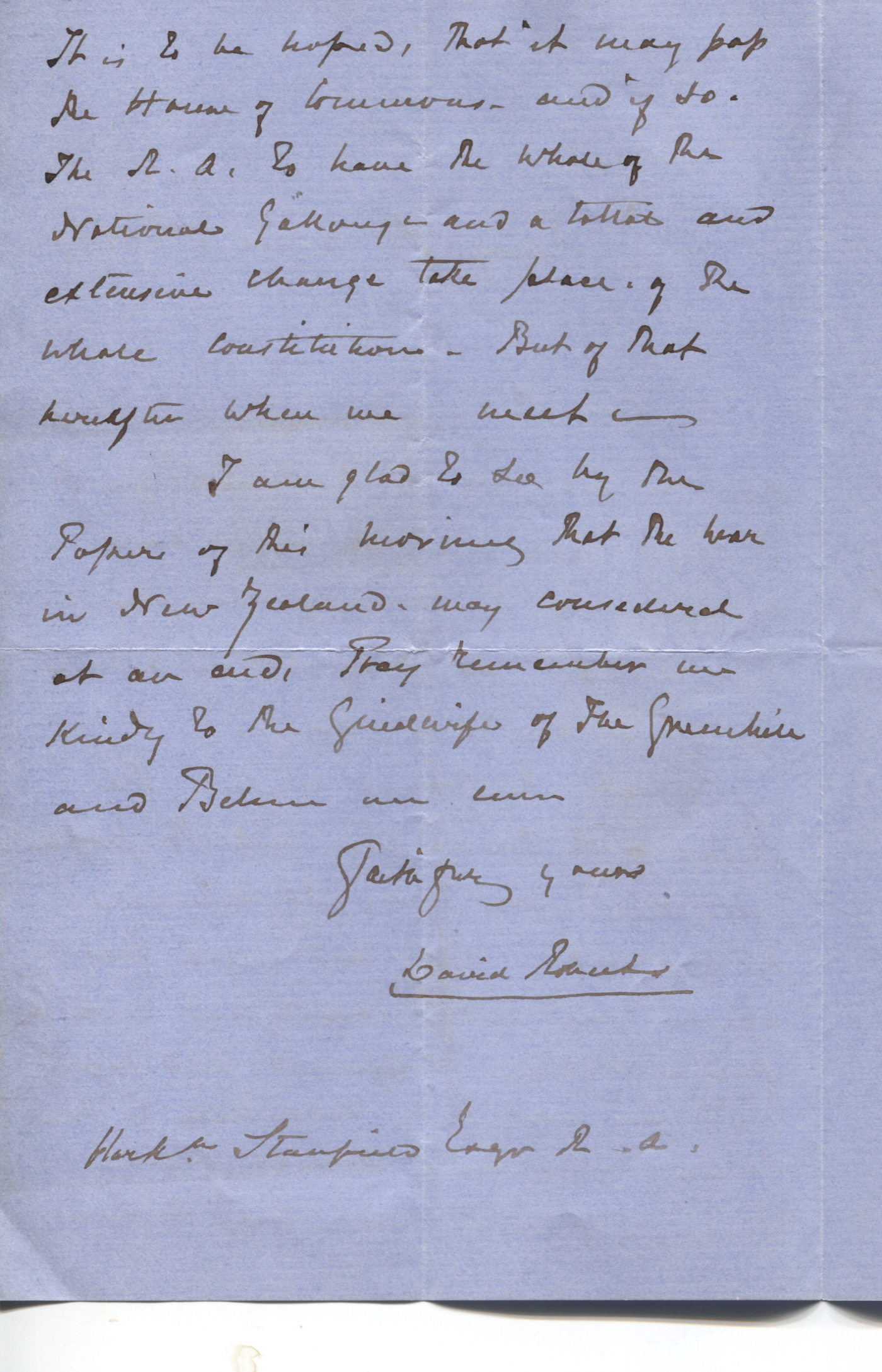
ROBERTS
(David, 1796-1864, Scottish Painter best known for his Lithographs of Egypt and the Near East)
Fine Autograph Letter signed to “My dear Stany”, Clarkson STANFIELD
(1793-1867, Painter, R.A.), saying that he had been “missed from the last two R.A. meetings? I trust that only the bitter cold weather was the cause of your absence last night? Do pray pop me a line... At a former meeting the Report of the Committee with the proposed alterations was read. 29 members being present, and last night was again read and discussed and with a few alterations confirmed and passed. It has now to be submitted to the Queen before being brought before Parliament - If approved by the Queen, this to be hoped, that it may pass the House of Commons - and if so the R.A. to have the whole of the National Gallery and a total and extensive change take place of the whole constitution. - but of that hereafter when we meet. I am glad to see by the Paper of this morning that the war in New Zealand may considered at an end. Pray remember me kindly to the Guidwife of the Greenhill...”, 2 side 8vo., with original autograph envelope, 7 Fitzroy Square, 10th March
Stanfield was briefly apprenticed to a coach decorator in 1806, but left owing to the drunkenness of his master's wife and joined a South Shields collier to become a sailor. In 1808 he was pressed into the Royal Navy, serving in the guardship HMS Namur at Sheerness. Discharged on health grounds in 1814, he then made a voyage to China in 1815 on the East Indiaman Warley and returned with many sketches.
The catalyst for the First Taranaki War was the disputed sale to the Crown of a 240 hectare block of land at Waitara, despite a veto by the paramount chief of Te Āti Awa tribe, Wiremu Kīngi, and a "solemn contract" by local Māori not to sell. Governor Browne accepted the purchase with full knowledge of the circumstances and tried to occupy the land, anticipating it would lead to armed conflict, and a demonstration of the substantive sovereignty the British believed they had gained in the Treaty of Waitangi. Hostilities began on 17th March 1860. In 1864 at the end of the war there was a six-month long Tauranga campaign launched by Duncan Cameron to disrupt Māori supply lines and secure the Bay of Plenty for European settlement. It was marked by strategic manoeuvering and intense battles between British Imperial forces and local Māori tribes, primarily Ngāi Te Rangi. The conflict culminated in the Battle of Gate Pā in April, where Māori defenders, under the leadership of Rawiri Puhirake, successfully repelled a British assault, inflicting significant casualties and earning a reputation as a humiliating defeat for the British.
Item Date:
1864
Stock No:
42638


<< Back